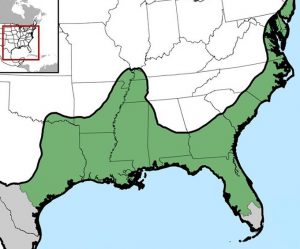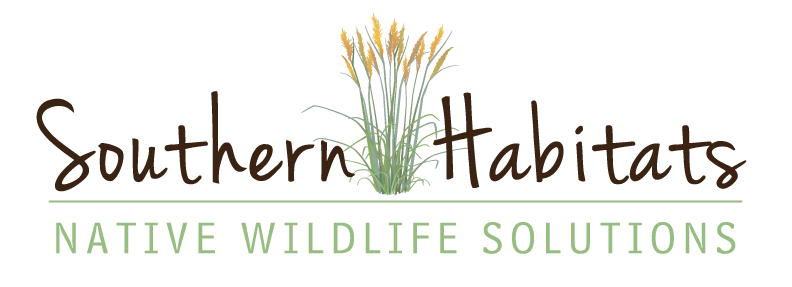- Wild Seed Collection/Processing
- Direct Seeding
- Live Plant Installation
- Contract Grow
- Bioengineering
- Native Plant & Seed Sales
- Herbicide Application
- Licenses Nursery
- Mowing & Brush Clearing
- Wildlife Food Plots
 We specialize in collecting and propagating southeastern herbaceous native plants and seeds. We use this material for projects involving groundcover restoration, wetland mitigation, erosion control, habitat improvement, aesthetic treatments and more.
We specialize in collecting and propagating southeastern herbaceous native plants and seeds. We use this material for projects involving groundcover restoration, wetland mitigation, erosion control, habitat improvement, aesthetic treatments and more.
Throughout years of experience, we’ve developed proven techniques for successfully restoring indigenous ground covers. We grow hundreds of thousands of native grass and wildflower plugs and offer wild-collected or field grown seed mixes for wet or dry sites. Our seed collections are from pristine, fire-managed conservation lands and our knowledge is unmatched. To learn more about our restoration process, read below.
Putting the Pieces Together
Start with local plant material.
Our unique approach at native groundcover restoration is the product of trial and error. Many native plant species (especially grasses) occur over a very wide range of the United States and Canada, and it is widely accepted that there is wisdom in using ecotypes of local origin. Some reasons cited include the risk of contaminating local genetics and thereby potentially weakening the species. Another is that wildlife has adapted to certain attributes of local ecotypes of plants. Over the course of many years of experience in planting native groundcover in the Southeast, we have found that the geographical origin of the material that’s being used can definitely affect a project’s long-term success.
Using the same genetics that have adapted to the specific conditions of the target area over thousands of years is the obvious reason for the much higher success rates of these plantings. While there is no replacement for local ecotypes, some species are much less sensitive to geographical changes and are more adaptable than others. ‘Alamo’ and ‘Kanlow’ switchgrass are good examples of this.
Consider unique objectives and weigh them against the natural characteristics of your site.
In addition to habitat improvement, we provide services, seeds, and plants for a variety of other applications, such as erosion control and aesthetic treatments, (wildlife will use them and don’t care what the intent was). This being said, our specialty is in fire-adapted ecosystems. Regular fire always means native grasses. Our first order of priority is restoring the native grass base on the site. In addition to providing habitat, native grasses provide the fine fuel needed for thorough burning, which is critical for the long-term success of these systems. Many times, this involves canopy reduction and herbicide to enhance and release grasses already present in the seed bank.
If a project area has experienced major soil disturbances it will most likely need to be seeded as the native seed bank is usually destroyed. In the case of agriculture, the seed bank is also full of noxious weed seeds, which have caused more native grass stand failures than anything else. By starting with establishing grasses, it is possible to suppress these weeds with selective herbicides that could not be used if wildflower seeds were also planted.
Wild Harvesting
We seek out available “donor” sites, or remnants of native grass stands in the area of the project and mechanically harvest the seeds. Before and during the mechanical wild harvest operation, depending on time of maturity, we also collect seeds of certain perennial wildflowers (and some grasses) for propagating live plugs. The mechanical harvest is primarily for the grass base, where most of the bulk is needed for direct seeding. The wildflower seed collections are done both mechanically and by hand.
Planting
After cleaning, testing, and treating the native grass seeds for dormancy, we return and plant them on the target or “recipient” site. Once we are satisfied with the grass stand, we begin to introduce the dicots (wildflowers, forbs, legumes). This is done a number of ways and depends on the size (budget) of the project. Typically, it is done by planting colonies of plants by seed and/or live plugs across the site. These plants eventually are found growing between these colonies as seeds are dispersed by wind and animals. The clean burn provided by the grasses helps the recruitment of these plants.
“Rough” Areas
Scattered throughout the grass dominated landscape, we strongly advocate leaving small islands and strips of dense, tangled midstory vegetation composed of woody shrubs for quail escape cover. For deer bedding sanctuaries we are more selective about the locations and also make them larger. These areas are protected from the burn by disking a fire line around the perimeter. Once established, this strategic dense cover placement helps provide the maximum habitat value on your property. We are also very involved in the establishment of screens and funnels to manipulate the travel patterns of animals through the property as well as increase daytime usage of food plots. Click here to learn more about cover placement.
Southern Wildflower Seeds
In addition to using wildflower seed that is already occurring near your site, there are also good southern ecotypes of wildflower seeds on the market, many of which we grow and offer for sale. Many of them are not found as common but are classic members of their respective historic plant communities that have likely suffered more than others from short sighted practices. Click here to see a list of our favorites. Southern Habitats is a member of the Florida Wildflower Seed and Plant Growers Association, which is an excellent source for Southern adapted wildflower seeds.

